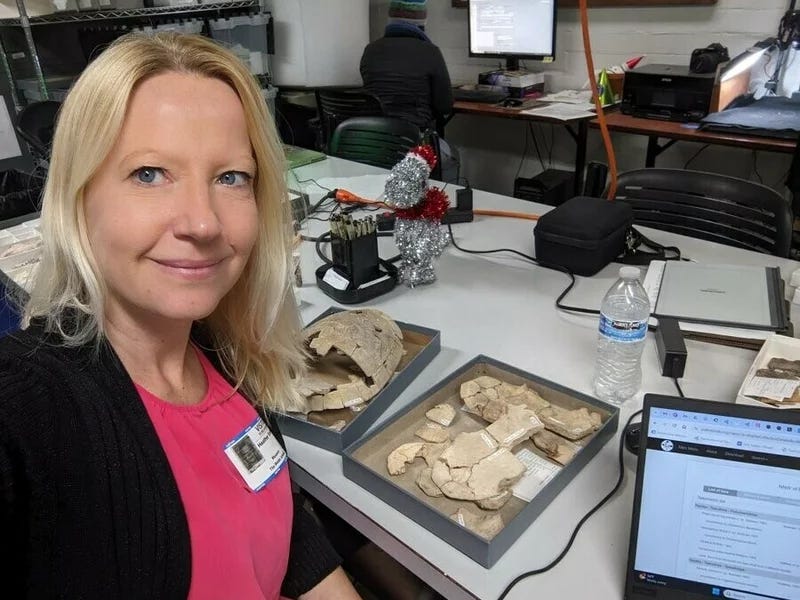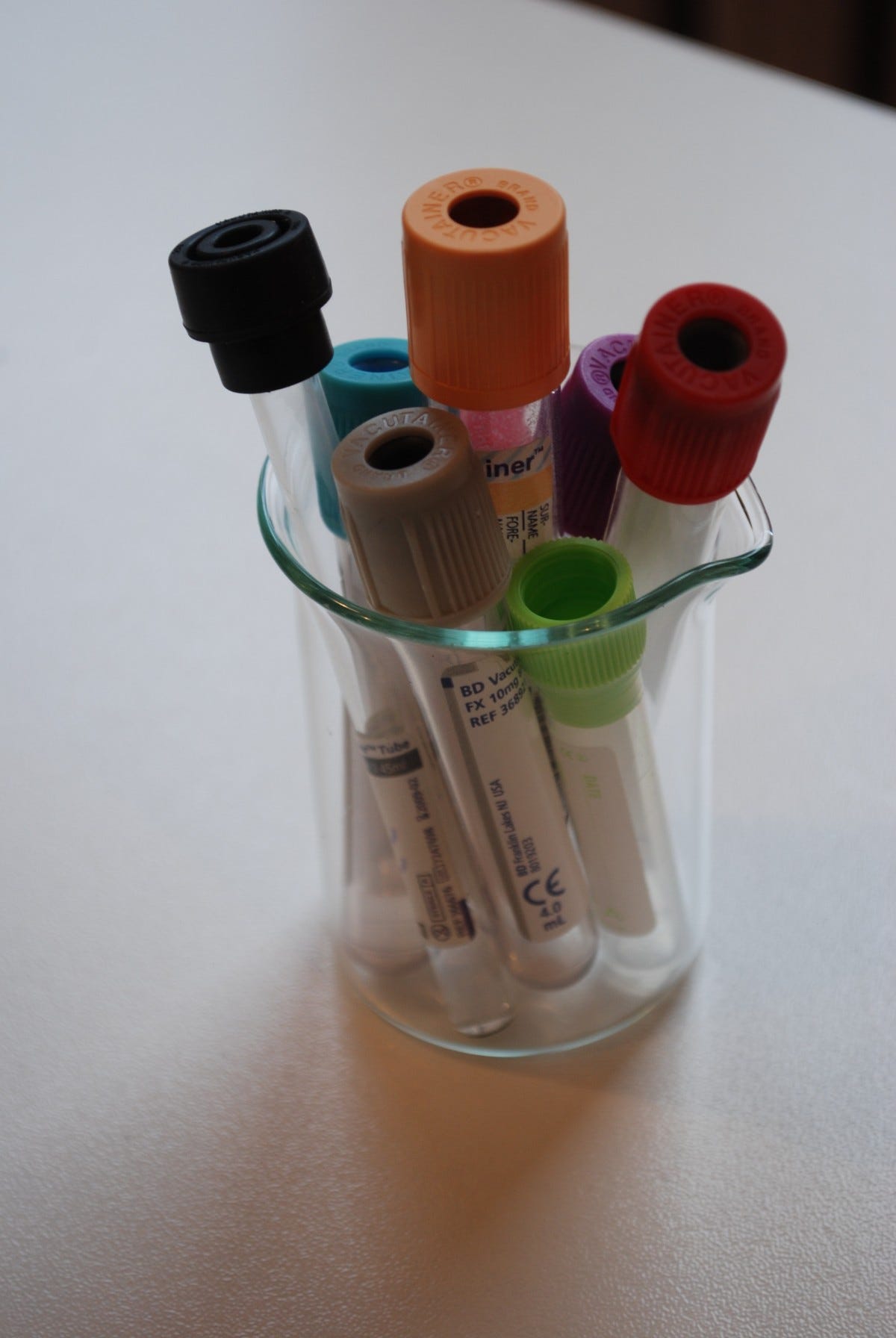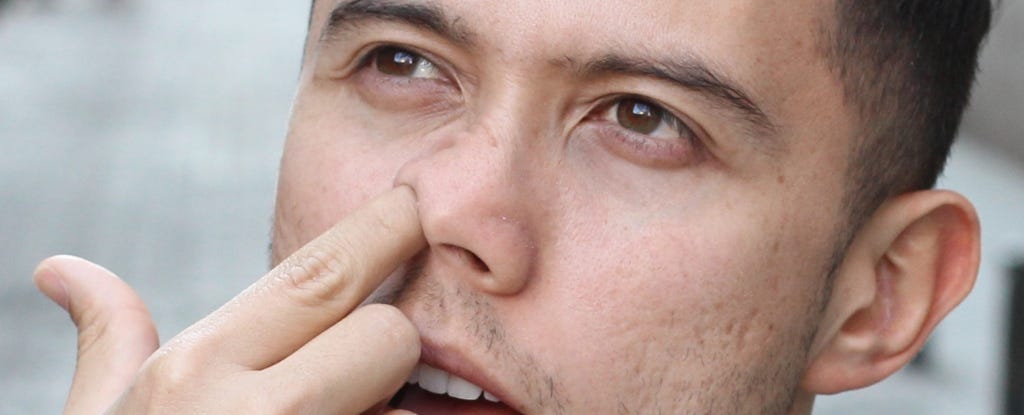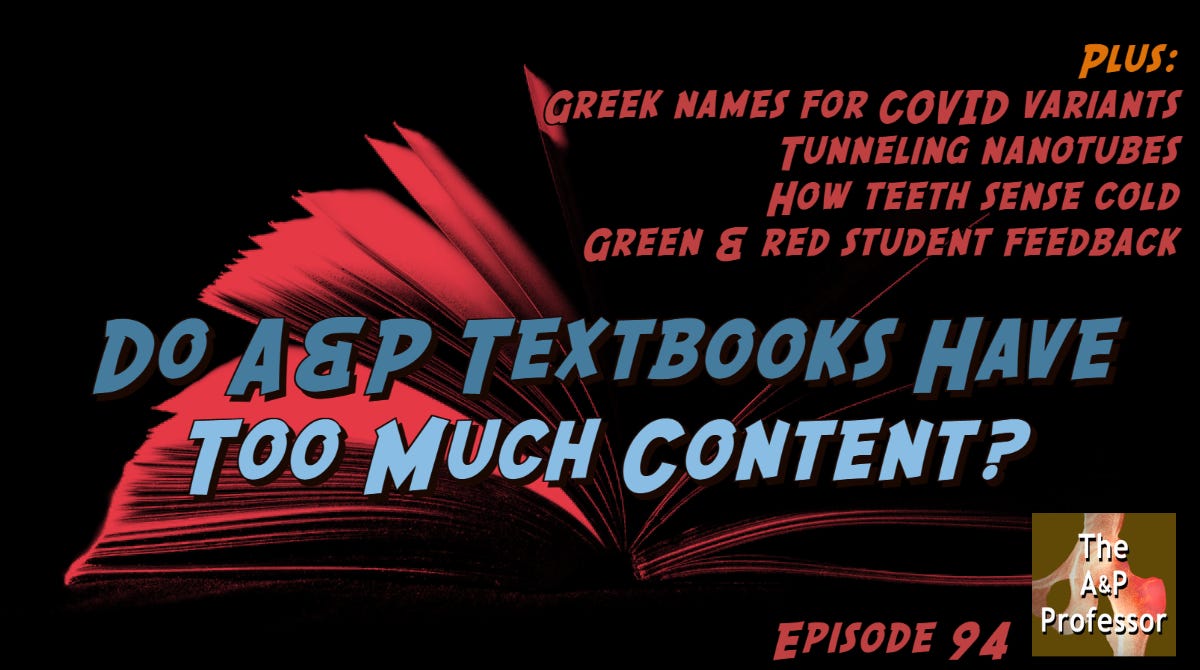Sci-Ed Update 313
Risky nose picking, genes aren't blueprints, job of the appendix, free A&P lessons, upcoming COVID isolation change, blood markers for long/short life, odors influence decisions, too much A&P content
CDC plans to drop five-day covid isolation guidelines
Americans who test positive for the coronavirus no longer need to routinely stay home from work and school for five days under new guidance planned by the Centers for Disease Control and Prevention.
The CDC plans to recommend that people who test positive for the coronavirus use clinical symptoms to determine when to end isolation. Under the new approach, people would no longer need to stay home if they have been fever-free for at least 24 hours without the aid of medication and their symptoms are mild and improving, according to three agency officials who spoke on the condition of anonymity to share internal discussions.
Read more→ AandP.info/auq
It’s time to admit that genes are not the blueprint for life
For too long, scientists have been content in espousing the lazy metaphor of living systems operating simply like machines, says science writer Philip Ball in How Life Works. Yet, it’s important to be open about the complexity of biology — including what we don’t know — because public understanding affects policy, health care and trust in science. “So long as we insist that cells are computers and genes are their code,” writes Ball, life might as well be “sprinkled with invisible magic”. But, reality “is far more interesting and wonderful”, as he explains in this must-read user’s guide for biologists and non-biologists alike.
When the human genome was sequenced in 2001, many thought that it would prove to be an ‘instruction manual’ for life. But the genome turned out to be no blueprint. In fact, most genes don’t have a pre-set function that can be determined from their DNA sequence.
Instead, genes’ activity — whether they are expressed or not, for instance, or the length of protein that they encode — depends on myriad external factors, from the diet to the environment in which the organism develops. And each trait can be influenced by many genes. For example, mutations in almost 300 genes have been identified as indicating a risk that a person will develop schizophrenia.
Kevin Patton comment→ Check out the book How Life Works: A User’s Guide to the New Biology
Read more→ AandP.info/87c
CourseSource is an open-access journal of peer-reviewed teaching resources
…a growing number of educators and administrators [are] interested in transforming their STEM classrooms and departments into student-centered, evidence-based, more effective learning environments that will produce the next generation of scientists.
One stumbling block in the process of this transformation, however, is the substantial time and energy commitment that an educator must make in order to learn and produce evidence-based curricula. In response to this need, and recommended in the Vision and Change report, an effort was undertaken to create a peer-reviewed, open access journal of student-centered biology education resources.
CourseSource provides authors with the opportunity to publish teaching materials in a high-quality format that documents their scholarly teaching efforts, accomplishments and innovations. To our knowledge, CourseSource is the only online journal that exclusively publishes teaching materials that:
★ Incorporate student-centered, evidence-based pedagogy.
★ Focus on professional society-developed learning goals and objectives.
★ Are organized and formatted to enable replicability and adaptation for other classrooms.
★ Do not require data supporting the efficacy of the specific materials themselves, since they are based on evidence-based practices that are fully supported by research.
CourseSource is an open-access journal, which means that all content is freely available without charge to the user or their institution. Users are allowed to read, download, copy, distribute, print, search, or link to the full texts of the articles, or use them for any other lawful purpose, without asking prior permission from the publisher or the author. Authors retain copyright to their materials, through a Creative Commons Attribution-NonCommercial-ShareAlike 4.0 International License.
Kevin Patton comment→ Course Source already has a lot of ready-to-use lessons and case studies for undergrad anatomy and physiology.
Read more→ AandP.info/8wn
Your appendix is not, in fact, useless. This anatomy professor explains

Smith grew up to be a professor of anatomy at Midwestern University and editor-in-chief of a journal called The Anatomical Record. And all these decades later, Smith has made a mark in the field by studying the very organ that threw off her family's vacation plans in 1992.
She acknowledges that the appendix has a bad rap as a useless organ that can cause you pain and require emergency surgery. "But it turns out recent research shows it does have functions that can help us," she says.
NPR's Short Wave spoke to Smith about what the appendix is good for and how a future where appendicitis can be prevented or treated without emergency surgery could be on the way.
Kevin Patton comment→ Textbooks don’t really state that the appendix is useless anymore. At least, most don’t state that. At the very least, my textbook doesn’t state that—but instead explains the functions of the appendix.
Read more→ AandP.info/65q
The Blood of Exceptionally Long-Lived People Reveals Key Differences
The pursuit of understanding the secrets behind exceptional longevity isn't easy, however. It involves unravelling the complex interplay of genetic predisposition and lifestyle factors and how they interact throughout a person's life.
Now our recent study, published in GeroScience, has unveiled some common biomarkers, including levels of cholesterol and glucose, in people who live past 90.
We found that, on the whole, those who made it to their hundredth birthday tended to have lower levels of glucose, creatinine and uric acid from their sixties onwards. Although the median values didn't differ significantly between centenarians and non-centenarians for most biomarkers, centenarians seldom displayed extremely high or low values.
Read more→ AandP.info/m5r
How Odors Influence Brain’s Decision Making Mechanism

Researchers have uncovered a novel function of the hippocampus in decision making, showing that specific brain cells, known as ‘time cells,’ are stimulated by odors to facilitate rapid ‘go, no-go’ decisions.
This study demonstrates how mice learned to associate fruity odors with a reward, leading to quicker and more efficient decision making.
By tracking the activation of these cells in response to scents, the team has revealed a direct link between odor, hippocampal function, and associative learning, suggesting that these cells play a crucial role beyond memory recall, directly influencing the brain’s decision-making process.
Key Facts:
The study identifies ‘time cells’ in the hippocampus as key players in the brain’s decision-making process, stimulated by specific odors to trigger rapid decisions.
Mice were able to associate fruity smells with positive outcomes, showing how odor cues can enhance the learning of decision-making behaviors.
This research sheds light on the intricate relationship between sensory perception and cognitive processes, revealing new insights into the hippocampus’s role in associative learning and decision making.
Read more→ AandP.info/d8w
Scientists Reveal How Nose-Picking Could Increase Risk of Alzheimer's
A new review advances the hypothesis that nose picking could play a role in increasing the risk of developing Alzheimer's disease – and the link is one that experts are now seriously considering.
It's one of those ideas that sounds daft initially but makes sense if you think about it. Simply put, bacteria and viruses on your fingers are getting an easy ride into your system if you stick them up your nose.
Bear in mind that the olfactory system in the roof of the nasal cavity has a direct path to brain areas in which Alzheimer's wreaks havoc, such as the hippocampus. That could be crucial in weighing up this risk, says the team behind the review, from Western Sydney University in Australia.
Read more→ AandP.info/7id
Content Coverage as a Persistent Exclusionary Practice: Investigating Perspectives of Health Professionals on the Influence of Undergraduate Coursework
STEM undergraduates navigate lengthy sequences of prerequisite courses covering volumes of science content. Given that these courses may contribute to attrition and equity gaps in STEM, research is needed to test the assumption that prerequisite content benefits students in their future studies and careers. We investigated the relevance of prerequisite course content for students’ careers through semistructured interviews with practicing nurses regarding their undergraduate anatomy and physiology (A&P) courses. Nurses reported that A&P content does not align with the skills and knowledge needed in the nursing profession. Interviewees averaged 39% on a brief A&P assessment, suggesting A&P prerequisites failed to impart a high degree of long-term A&P knowledge among nurses. Further, practicing nurses perceived overcommitment to A&P content coverage as an exclusionary practice that eliminates capable individuals from the prenursing pathway. These findings challenge assumptions surrounding the justification for prerequisite course content and raise questions of whether content expectations actively exclude individuals from STEM or healthcare careers. We aspire for this study to stimulate conversation and research about the goals of prerequisite content, who is best positioned to articulate prerequisite content objectives, and the influence of content coverage on equity and justice in undergraduate STEM education.
Read more→ AandP.info/pjo
Do A&P Textbooks Have Too Much Content?
Oh, that huge A&P textbook I teach from! Do I really need to cover all of it? Host Kevin Patton discusses his take on this age-old problem. Does the color of my marking pen send a signal that I don’t want to send to my students? A breakthrough in understanding how teeth sense cold. And what in the world is a tunneling nanotube—and can I get one at my local hardware store? Greek names for SARS-CoV-2 variants simplifies conversation and avoids stigma.
00:00 | Introduction
00:43 | How Do Teeth Sense Cold?
07:04 | Sponsored by AAA
08:32 | Red & Green for Student Feedback
18:03 | What’s a TNT?
23:52 | Sponsored by HAPI
25:06 | Greek Names for COVID Variants
30:24 | Are A&P Textbooks Too Long? Are Mittens Too Big?
36:41 | Sponsored by HAPS
39:15 | Are A&P Textbooks Too Long? What About Novels?
46:35 | Staying Connected
To listen to this episode, click on the play button above ⏵ (if present) or this link→ theAPprofessor.org/podcast-episode-94.html








